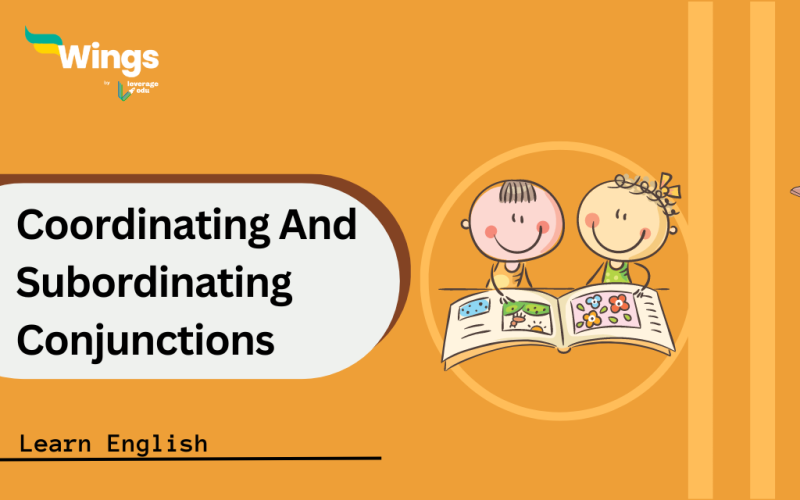Conjunctions are a vast part of English Grammar. They are mainly used to connect words, phrases and clauses within a sentence. There are mainly two types of conjunctions: coordinating conjunctions and subordinating conjunctions. However, there are differences in which one should you be aware of while learning about conjunctions. Continue reading the blog article below to uncover more about Coordinating and Subordinating Conjunctions.
This Blog Includes:
Difference Between Coordinating and Subordinating Conjunctions
As we mentioned above, conjunctions are used to connect words, phrases or clauses in a sentence. The two different types Coordinating and Subordinating Conjunctions are used differently to create clear and coherent sentences. To understand the difference between the two, look at the table below.
| Particulars | Coordinating Conjunctions | Subordinating Conjunctions |
| Joins | They are used to join independent clauses. | They are used to join independent clauses with dependent clauses. |
| Usage | They are used to join two words of the same grammatical relevance. | Used to introduce dependent clauses or adverbial clauses |
| Relationship | Used to express relationships such as addition, choice, result or contrast | Used to express relationships such as condition, time or concession. |
| Examples | And, but, for, nor, so, or, yet | however, since, until, unless, where, while |
Also Read: 20 + Exercises On Passive Voice With Modals
What are Coordinating Conjunctions?
Words, phrases, or sentences with equal grammatical weight are joined by coordinating conjunctions. Usually, they are used to combine with comparable structures or meanings. When coordinating conjunctions are used, some examples are “and,” “but,” “or,” “nor,” “for,” “so,” and “yet.” When two or more separate clauses are brought together to form compound sentences, these coordinating conjunctions play a crucial role.
Also Read: Active and Passive Voice Quiz To Enrich Your Voice Proficiency
What are Subordinating Conjunctions?
Subordinating conjunctions are words that link dependent and independent clauses. They tend to emphasize the connection between the independent and dependent clauses, e.g., by mentioning cause and effect, contrast, time, condition, or concession. Subordinating conjunctions include the following, “although,” “as,” “since,” “though,” “because,” “unless,” “until,” etc.
Coordinating and Subordinating Conjunctions (Download PDF)
Also Read: Compound Words: Meaning, Types, Examples with Practise Worksheet
Related Posts to Read
FAQs
Conjunctions that coordinate (or, and, but) Conjunctions that are correlated (and/or, not only/but also) subordinate Conjunctions (because, because, when) Adverbs in the conjunctive (although, thus).
The seven types of conjunctions are after, although, before, even though, since, when etc.
Coordinating conjunctions are used to connect two words and no comma is needed. For example: I will have either ice cream or cold coffee.
This was all about coordinating and subordinating conjunctions. Hope you understand the concept and know how to proceed. You can also follow Leverage Edu for more exciting and informative blogs.
 One app for all your study abroad needs
One app for all your study abroad needs















 45,000+ students realised their study abroad dream with us. Take the first step today.
45,000+ students realised their study abroad dream with us. Take the first step today.
